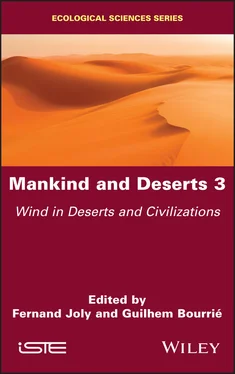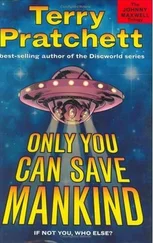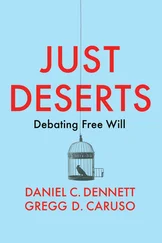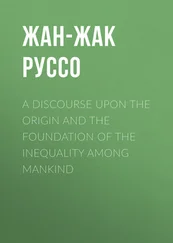54 22
55 23
56 24
57 25
58 26
59 27
60 28
61 29
62 30
63 31
64 32
65 33
66 34
67 35
68 36
69 37
70 38
71 39
72 40
73 41
74 42
75 43
76 44
77 45
78 46
79 47
80 48
81 49
82 50
83 51
84 52
85 53
86 54
87 55
88 56
89 57
90 58
91 59
92 60
93 61
94 62
95 63
96 64
97 65
98 66
99 67
100 68
101 69
102 70
103 71
104 72
105 73
106 74
107 75
108 76
109 77
110 78
111 79
112 80
113 81
114 82
115 83
116 84
117 85
118 86
119 87
120 88
121 89
122 90
123 91
124 92
125 93
126 94
127 95
128 96
129 97
130 98
131 99
132 100
133 101
134 102
135 103
136 104
137 105
138 107
139 108
140 109
141 110
142 111
143 112
144 113
145 114
146 115
147 116
148 117
149 118
150 119
151 120
152 121
153 122
154 123
155 124
156 125
157 126
158 127
159 128
160 129
161 130
162 131
163 132
164 133
165 134
166 135
167 136
168 137
169 138
170 139
171 140
172 141
173 142
174 143
175 144
176 145
177 146
178 147
179 148
180 149
181 150
182 151
183 152
184 153
185 154
186 155
187 156
188 157
189 159
190 160
191 161
192 162
193 163
194 164
Series Editor
Françoise Gaill
Mankind and Deserts 3
Wind in Deserts and Civilizations
Edited by
Fernand Joly
Guilhem Bourrié

First published 2021 in Great Britain and the United States by ISTE Ltd and John Wiley & Sons, Inc.
Apart from any fair dealing for the purposes of research or private study, or criticism or review, as permitted under the Copyright, Designs and Patents Act 1988, this publication may only be reproduced, stored or transmitted, in any form or by any means, with the prior permission in writing of the publishers, or in the case of reprographic reproduction in accordance with the terms and licenses issued by the CLA. Enquiries concerning reproduction outside these terms should be sent to the publishers at the undermentioned address:
ISTE Ltd
27-37 St George’s Road
London SW19 4EU
UK
www.iste.co.uk
John Wiley & Sons, Inc.
111 River Street
Hoboken, NJ 07030
USA
www.wiley.com
© ISTE Ltd 2021
The rights of Fernand Joly and Guilhem Bourrié to be identified as the authors of this work have been asserted by them in accordance with the Copyright, Designs and Patents Act 1988.
Library of Congress Control Number: 2021930490
British Library Cataloguing-in-Publication Data A CIP record for this book is available from the British Library ISBN 978-1-78630-632-6
Foreword
Mankind and deserts
Fernand Joly 1 departed from this world before he was able to complete this book, through which he had hoped to share his experiences of and passion for deserts.
“Yet another book on deserts!” some might think; another book to add to the numerous publications dedicated to these alien and fascinating worlds.
This book, however, is different from earlier books, as can be seen from its title “ Mankind and Deserts”. It is based on the singular relationships that are formed between humans and the world of the desert – relationships that are unique because they can be traced back to the very origins of humanity. Indeed, it is from the arid Horn of Africa (East Africa) that large migrations began and it is along the deserts, if not within the deserts themselves, that we find the major cradles of burgeoning historical civilizations. This inhospitable world is also associated with great spiritual leaders such as Moses, Jesus, Mohammed and the Buddha, while serving as the backdrop for adventurers and empire builders from Alexander the Great to Genghis Khan, or from the Incans to the Conquistadors in the Andes and Mexico.
What is this universe that is so barren and yet so mesmerizing?
“ All about a word” was how Fernand Joly introduced his book: “ What is a desert?” The ambiguity in this word results from the fact that it has been used in different senses across literature and throughout history. For a geographer-writer such as Fernand Joly, the one fact that stood out was that there was no one desert; instead there were multiple deserts , diverse and varied, ranging from Death Valley to the Kalahari, from the Namib to the Atacama or the Gobi desert. Each of these is a unique landscape, whose uniqueness was born out of its position with respect to the general atmospheric circulation, its geographic location with respect to the sea and to its relief features. And yet, transcending all differences, there is one constraint that binds them all together: aridity, defined as a natural physical state characterized by persistent dryness with the corollary of extremely scarce water resources. Both these concepts, aridityand water, are at the heart of the following chapters. Aridity ( Chapter 3) because it “transcends time and takes over space” and water (Volume 2, Chapters 1–3) because it is the essential resource for all life, especially in the desert. Aridity is distinct from “drought”, which is simply a “period with insufficient rainfall”. Water is seen through the lens of how it appears on land: “wild water”, which flows over slopes in an un-channeled manner (Volume 2, Chapter 1), under the impact of violent but brief downpours, and “concentrated waters”, i.e. waters “concentrated” into a channel, fed by distant precipitation upstream of the borders of the desert. As can be seen, there is in fact a true hydrography of the arid world. Satellite images, among other sources, offer us clear and accurate reproductions of these systems: fossil hydrographic networks , the legacy of ancient humid periods, a map of intermittent water bodies (Volume 2, Chapter 2): playas and sabkhas , permanent lakes with fluctuating shorelines, such as Lake Chad or Lake Eyre, or large allogenous rivers (Volume 2, Chapter 3) that are born outside the desert but travel through the desert, sustaining life, such as the Colorado, the Niger and the Nile, “the first and most remarkable of rivers in the arid world”.
The role played by salts in hot deserts is rarely discussed in a systematic manner. Guilhem Bourrié, geochemist and soil scientist at INRAE, has analyzed the origins and nature of these salts and demonstrated how important these salt deposits in the desert are for humans, whether they live off agriculture, livestock or, indeed, the salt trade (Volume 2, Chapter 4).
Chapter 1of Volume 3, drafted by Joly, was edited after his demise by Yann Callot, a professor at the University Lyon 2 who is a specialist in ergs and dunes. This chapter examines the importance of windin the desert. Wind, sometimes considered to be more emblematic of a desert than even dryness, counts among the earliest dynamics on Earth, an element that humans have not always been able to control. Indeed, this lack of understanding of wind has sometimes had disastrous consequences for certain projects (see the Green Dam in Algeria).
Читать дальше












